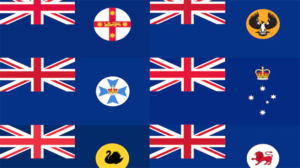Home » Commentary » Opinion » It’s not just Canberra. The states face a corona budget belting too
· Spectator

 The coronavirus pandemic has drawn state government policies into the response to a national crisis like rarely before — a consequence of the states’ role in the national cabinet; their control over restrictions and their relaxation; and their health responsibilities.
The coronavirus pandemic has drawn state government policies into the response to a national crisis like rarely before — a consequence of the states’ role in the national cabinet; their control over restrictions and their relaxation; and their health responsibilities.
The conventional wisdom is that while the states are wielding much of the power, the Commonwealth will bear the fiscal costs and political accountability for the economic fall and recovery. But this is no garden–variety slump.
It is true that the Commonwealth will bear the lion’s share of costs, but the states and territories are also being hit hard. It is also the case that states hold the keys to economic recovery to an unusual degree — and voters know it.
Premiers should contemplate that, as they bask in the immediate glory of having helped suppress the virus and dilly-dally over the removal of restrictions that can no longer be justified (if they ever were).
Even before the crisis, the states were facing mounting debts. The pandemic is just making the mountain bigger.
Their fiscal strength — as updated most recently in mid-year budget reviews — was being sapped by varying combinations of weak revenue growth, undisciplined operating expenditure, slender operating surpluses, and surging infrastructure spending leading to large borrowing requirements and ballooning debt.
The states’ fiscal profile is in marked contrast to the Commonwealth, which had its debt blow-out earlier and was in the process of flattening the debt curve and starting to bend it down.
The states were heading in the opposite direction. For example, aggregate state non-financial public sector net debt was set to rise from around 45 per cent of operating revenue (a more meaningful measure than the percentage of gross state product) in 2019 to 75 per cent in 2022.
That is all in the past. The pandemic will hit state budgets in three ways: additional expenses as a direct consequence of the crisis (mainly health-related); discretionary economic support packages, such as waivers of various taxes and fees; and the loss of revenue from shrinking tax bases. From announcements made so far, the first two look like totalling about $15 billion.
The third category will be the largest. It is easy to identify $120 billion of revenue at risk of a severe decline in state budgets, out of total revenue of $280 billion.
Most at risk are GST revenue (particularly as goods and services subject to GST will be among the hardest hit as consumers cut back); payroll tax (as employment contracts and wages weaken); stamp duty on property transactions (which will shrink drastically for a while along with the volume of transactions); gambling taxes (most opportunities for gambling having been closed off); and stamp duty on vehicles (sales of which have crashed).
It is impossible to quantify the likely hit to revenue. But with $30 billion per quarter at high risk, it is not hard to envisage half that being lost in the current quarter; and further but smaller proportions in subsequent quarters (depending on how long the economic shut-down continues and its effects linger).
Some of it will be recouped in later quarters — for example as some property and vehicle sales are time-shifted rather than cancelled — but much of it will be a permanent loss.
Putting the three components together, the hit to state budgets could approach $50 billion in 2020. This would take net debt to almost 90 per cent of revenue by 2022, continuing the long-term rising trend from only 10 per cent just before the GFC.
The increase in state debt will combine with a much larger increase in Commonwealth debt to drive total general government net debt to around 40% of GDP, compared with 22% recently and a negative amount before the GFC.
In dollar terms, general government gross debt will far exceed $1 trillion by 2022, compared with $100 billion before the GFC. These projections could be lower — but not greatly so — depending on how the $60 billion downward revision to the estimate cost of JobKeeper is handled.
The situation of individual states and territories varies. New South Wales is in a stronger position to absorb the shock than other states. Western also is relatively well placed, having already started to put its debt on a downward path.
The fiscal struggle that lies ahead for other states and territories — most of which were already heading for net debt ratios of 80–90 per cent in 2022 before the pandemic — will be tougher.
They will need to curb operating expenses, be more selective with infrastructure projects, do more privatisation, reform their taxes, and take part in other economic reforms to help boost the nation’s dismal productivity performance.
Any state that takes a ‘business as usual’ approach from here on, and hopes for years of good luck, is inviting trouble.
Robert Carling is a Senior Fellow at the Centre for Independent Studies and a former IMF and federal and state Treasury economist.
It’s not just Canberra. The states face a corona budget belting too